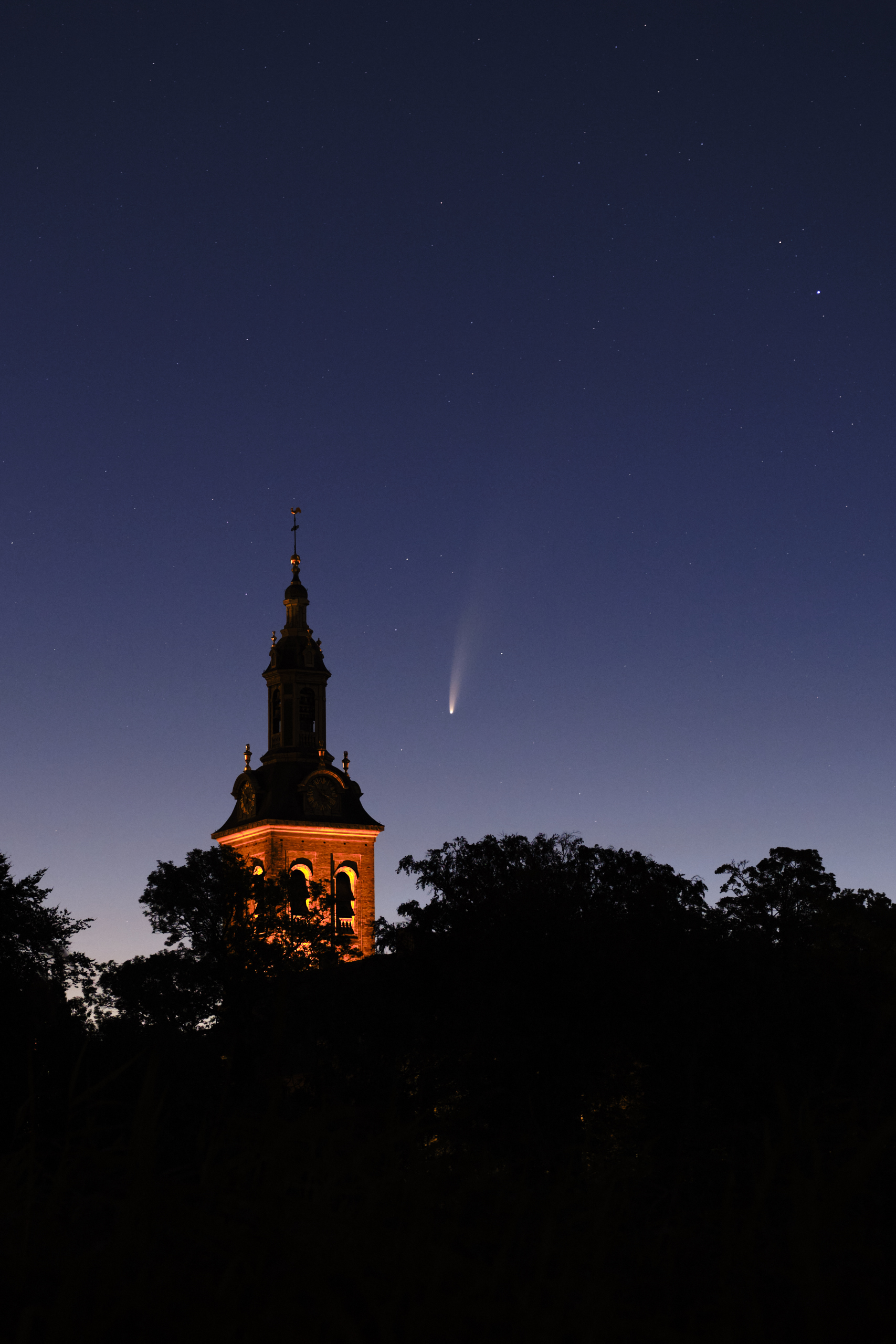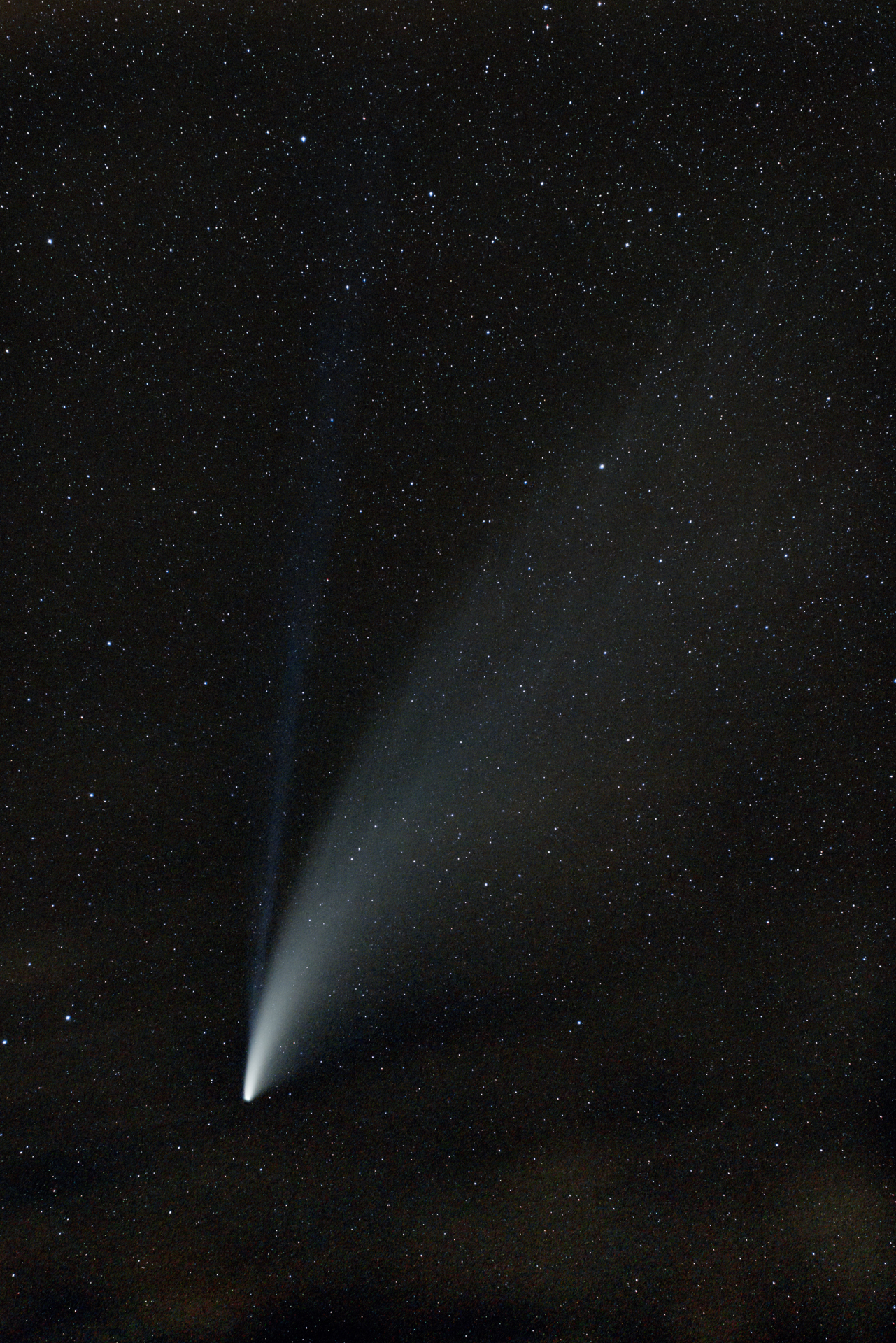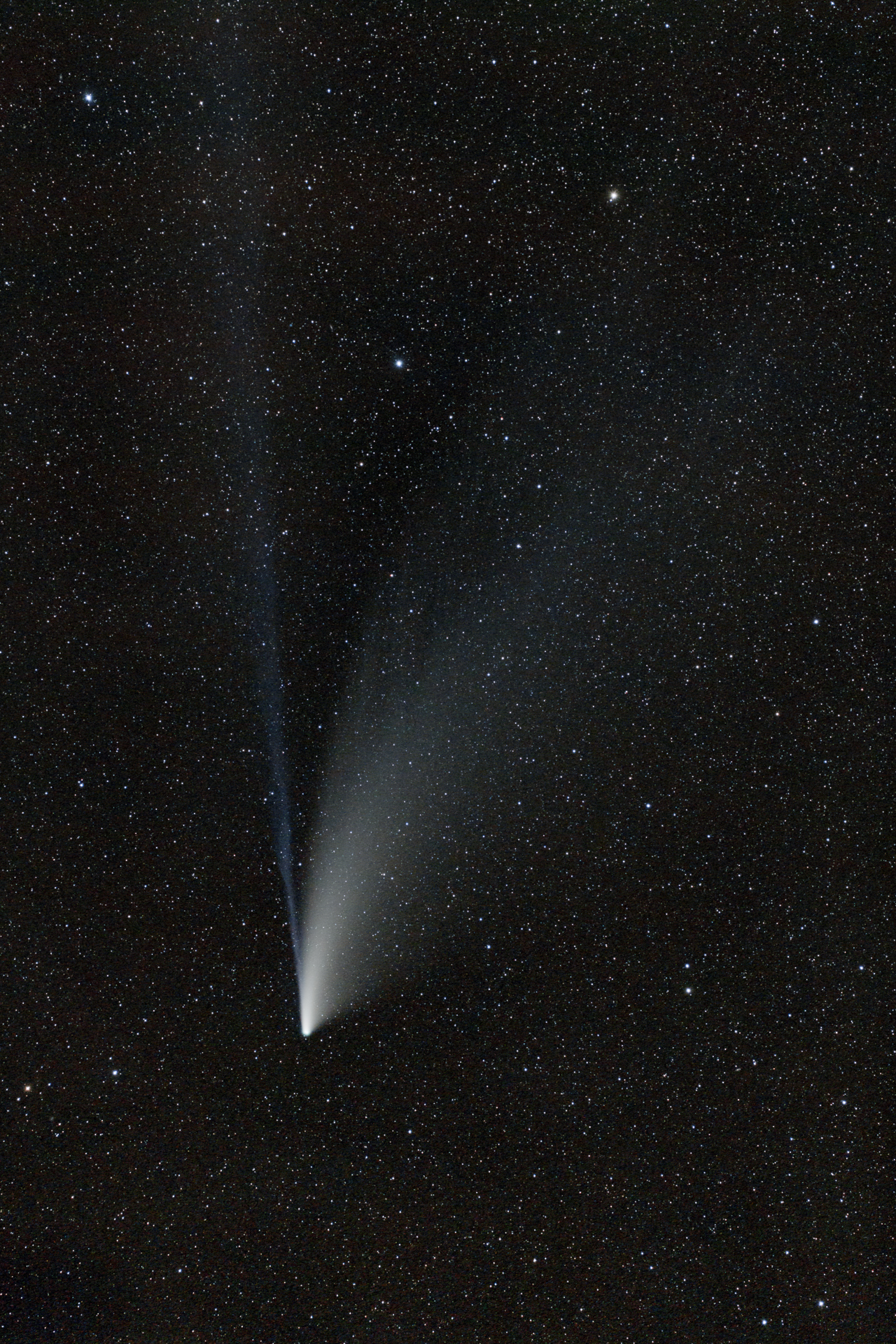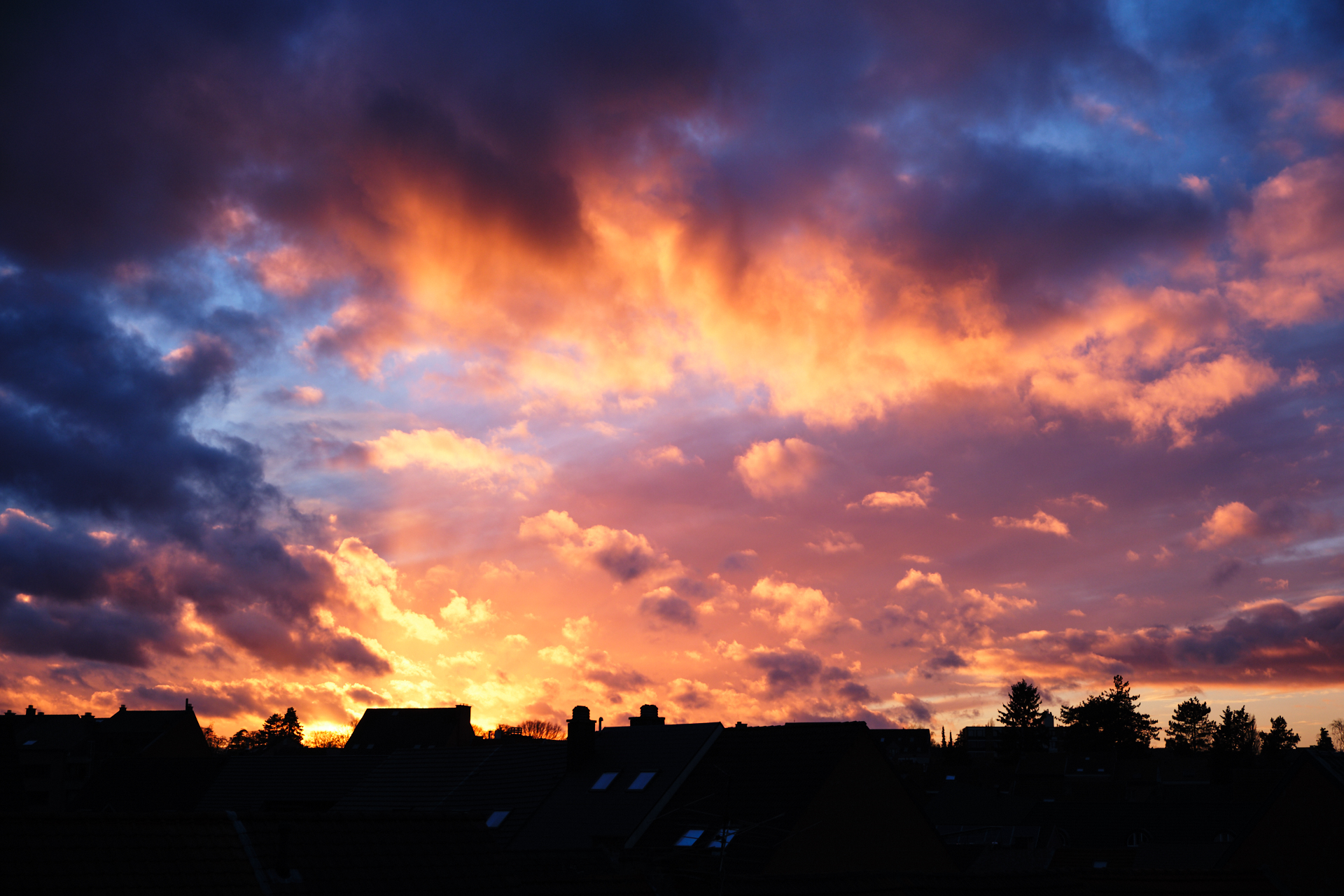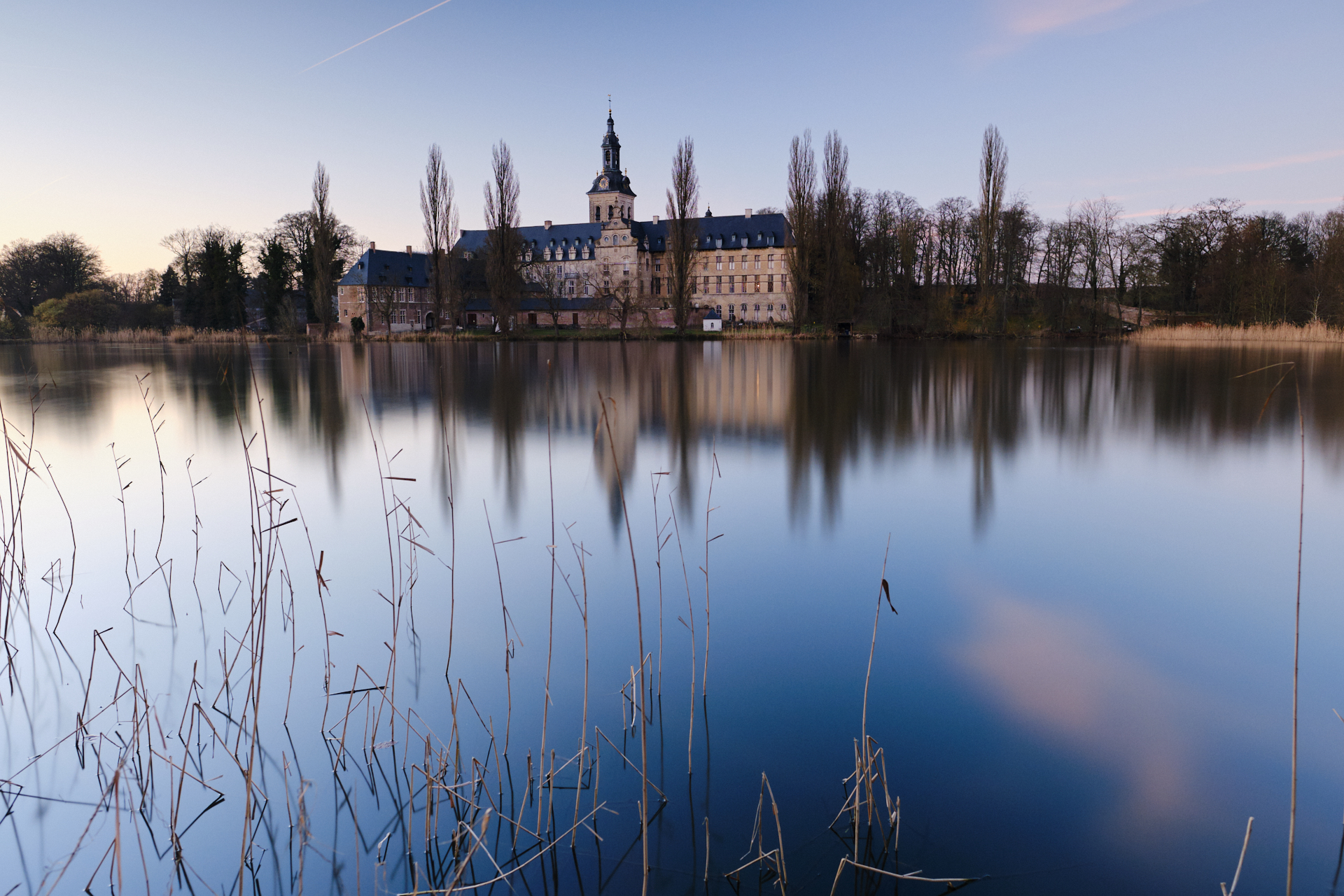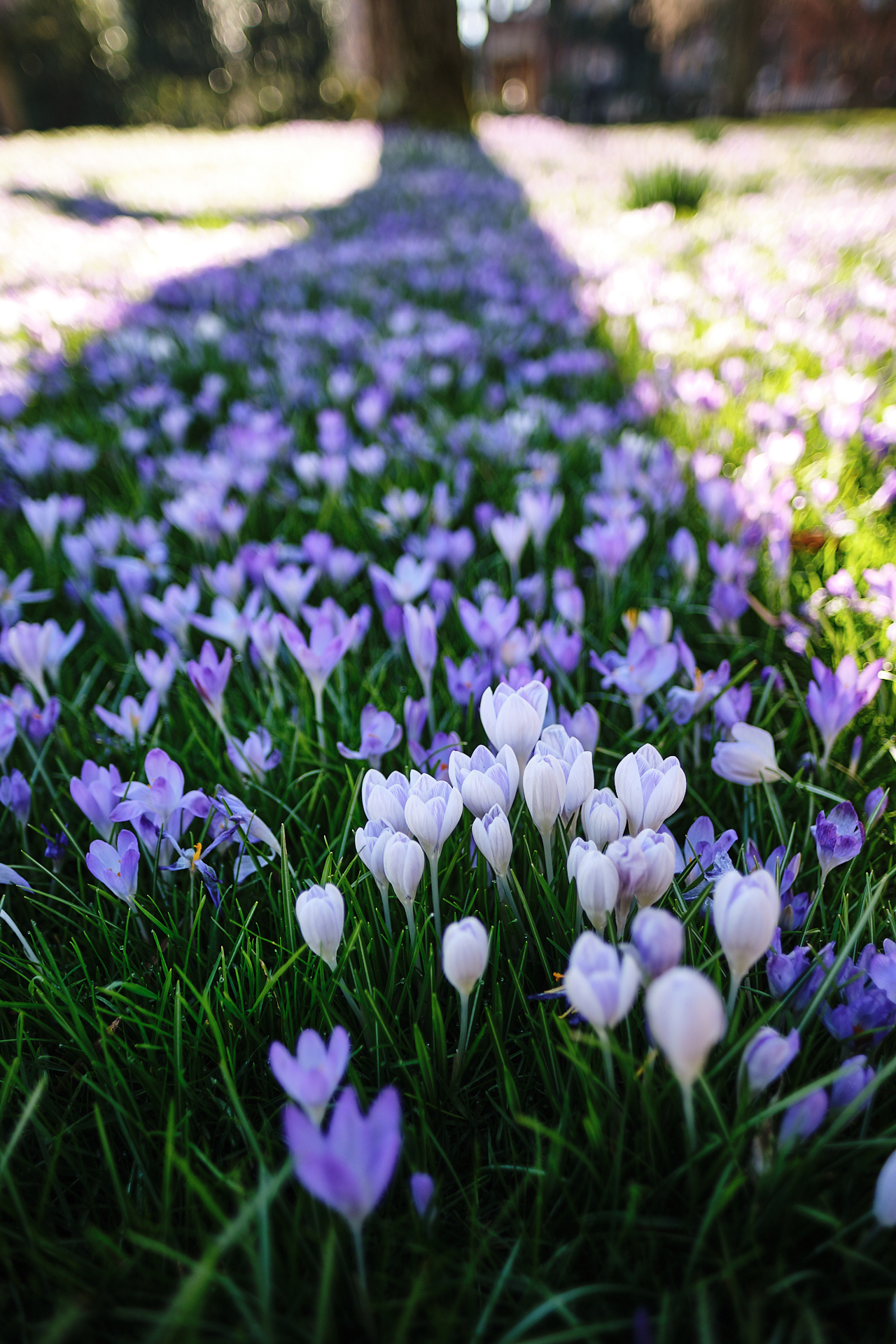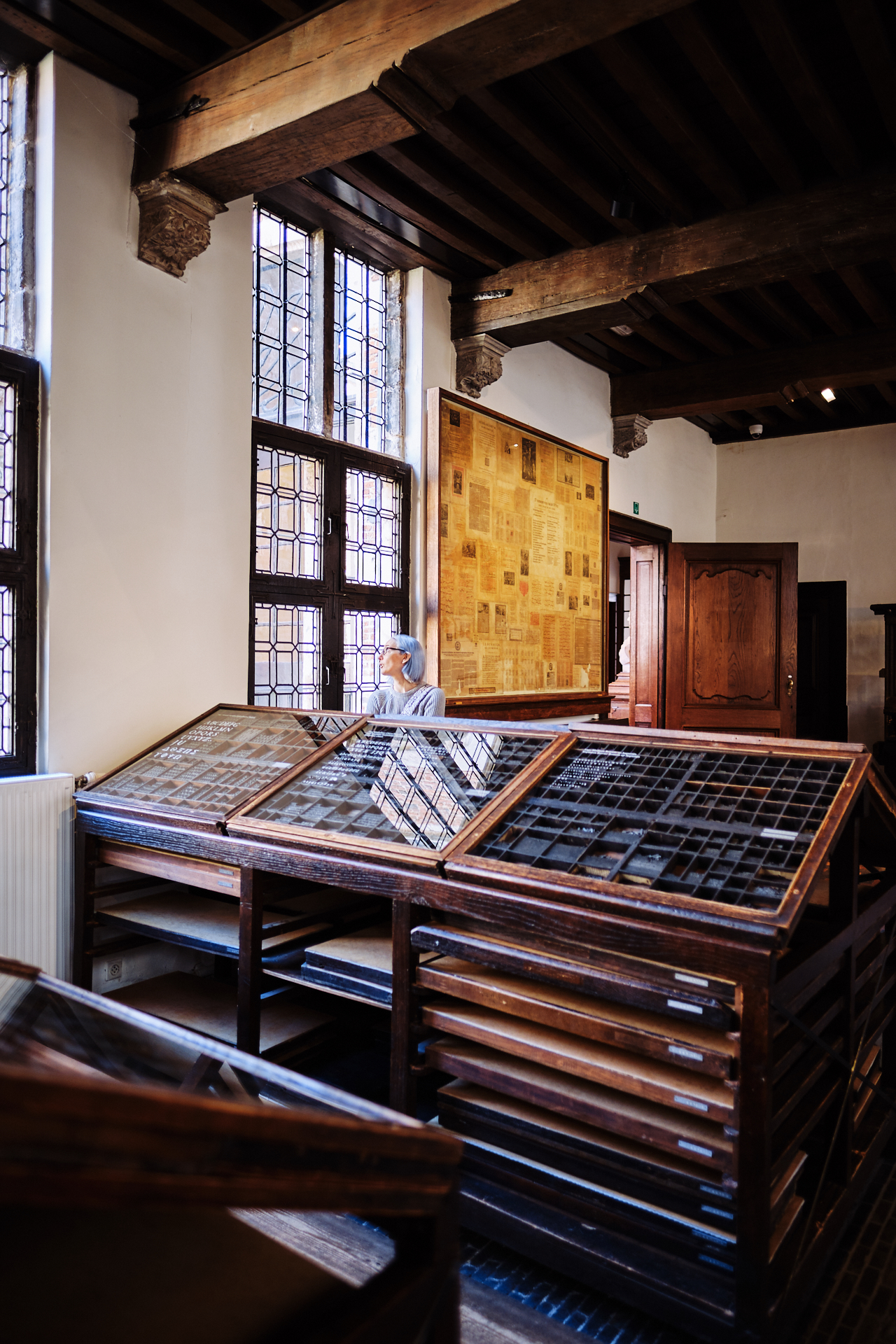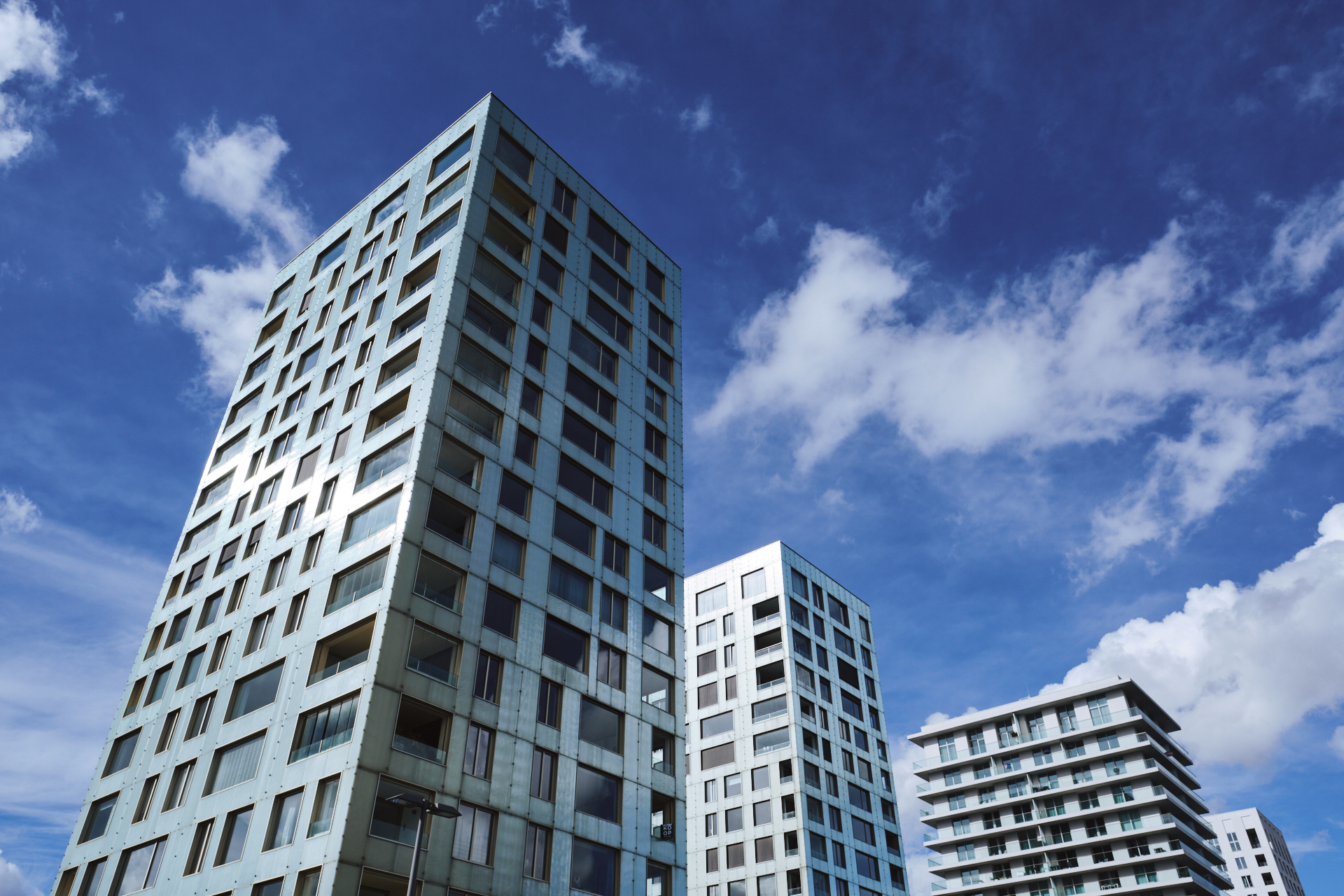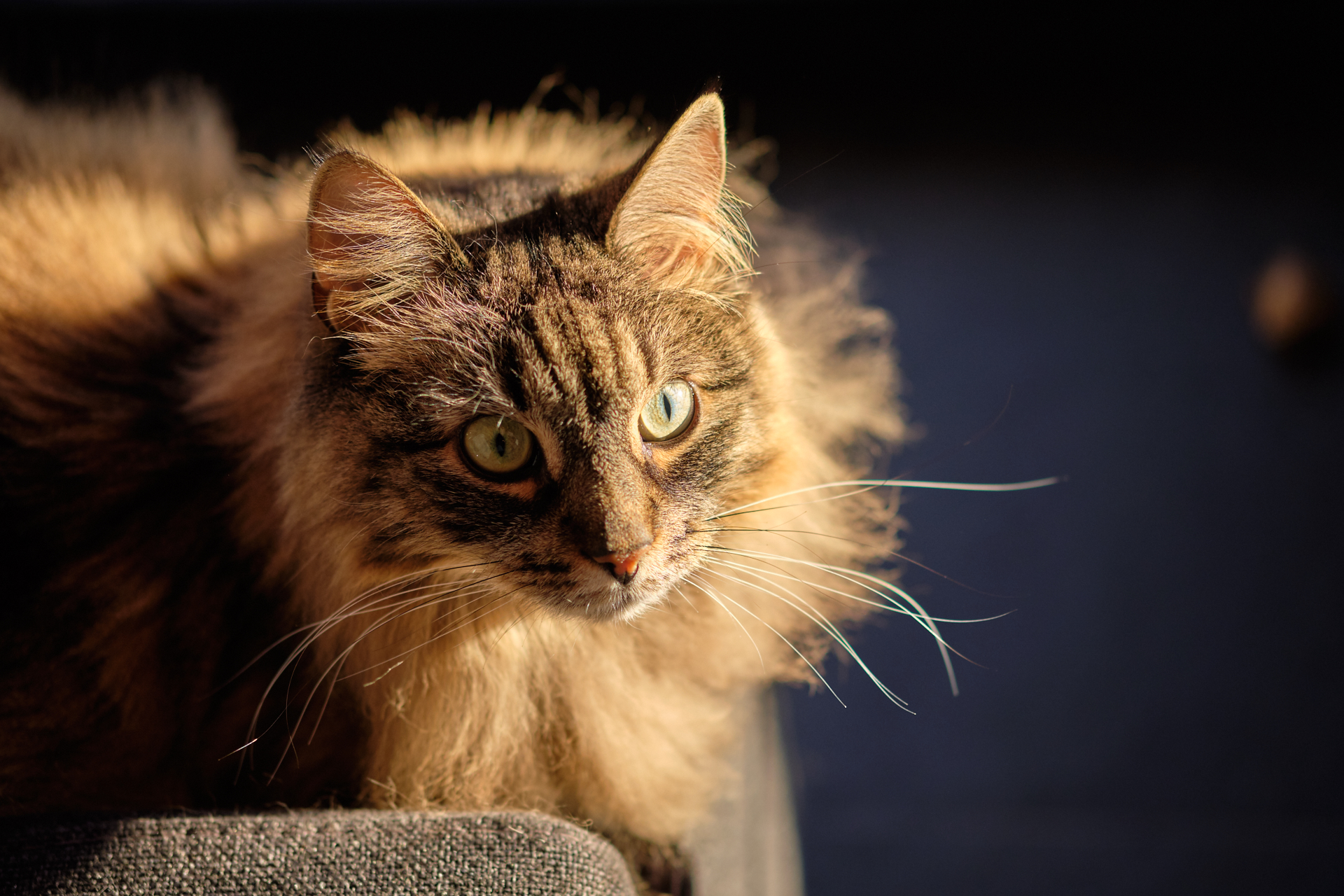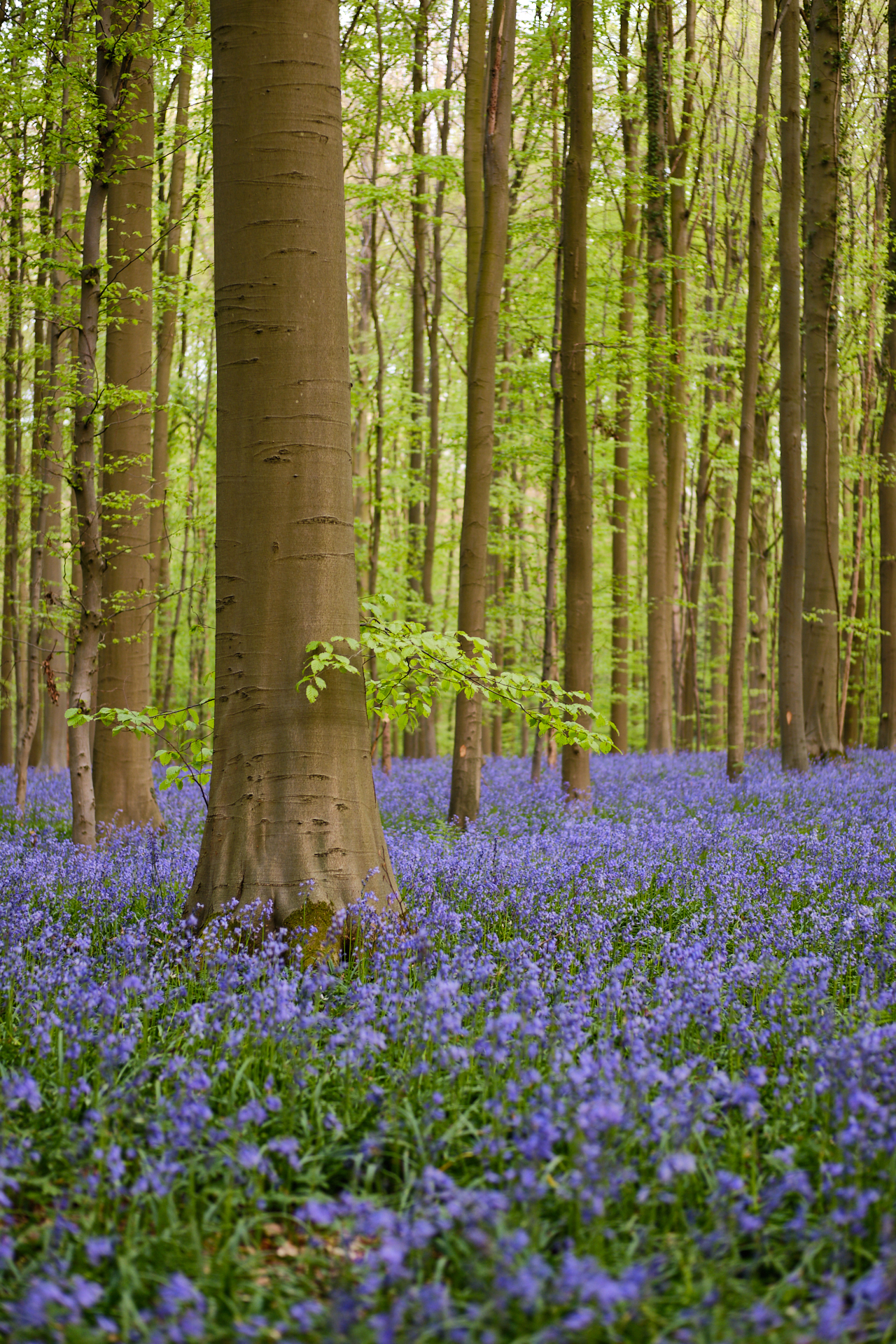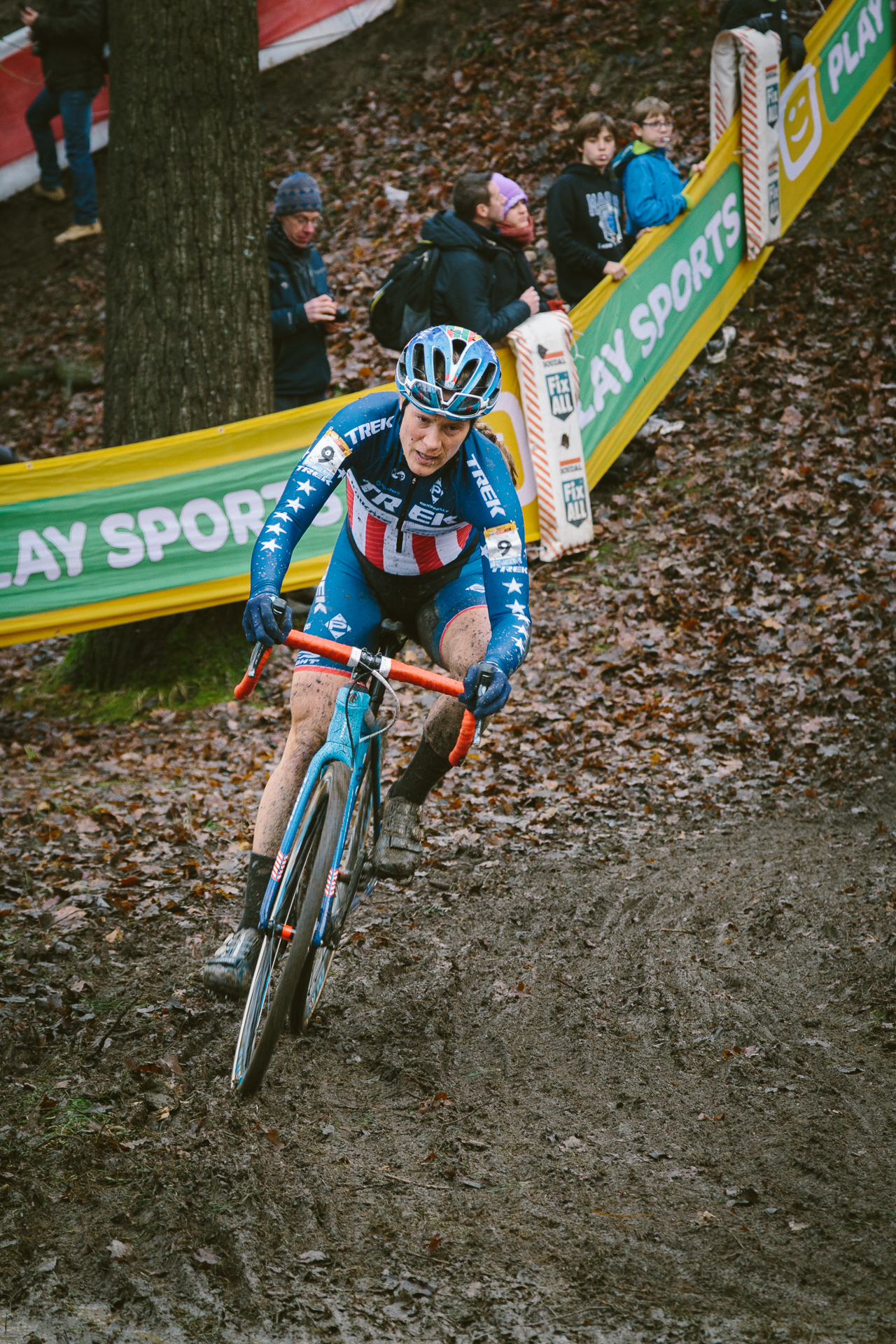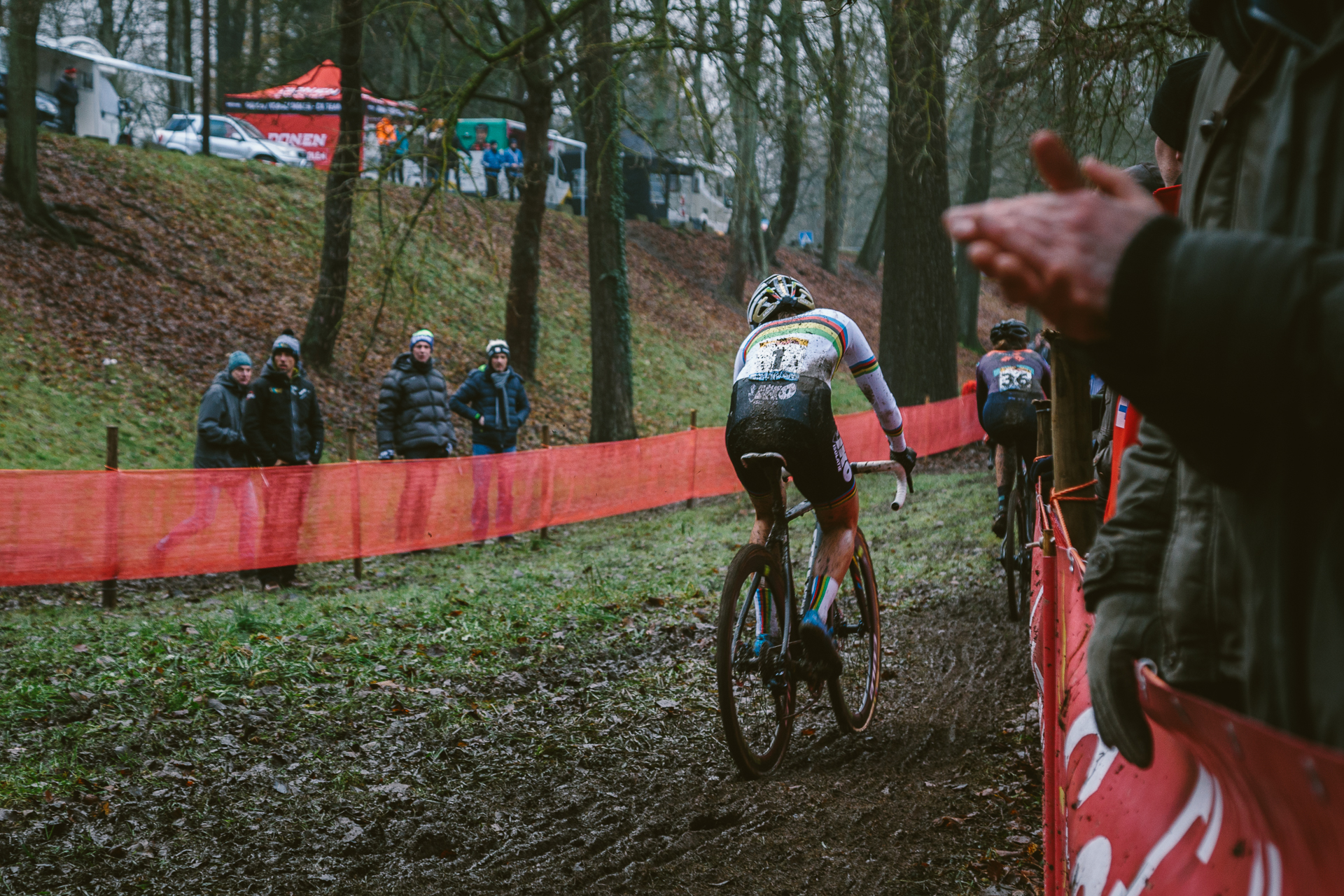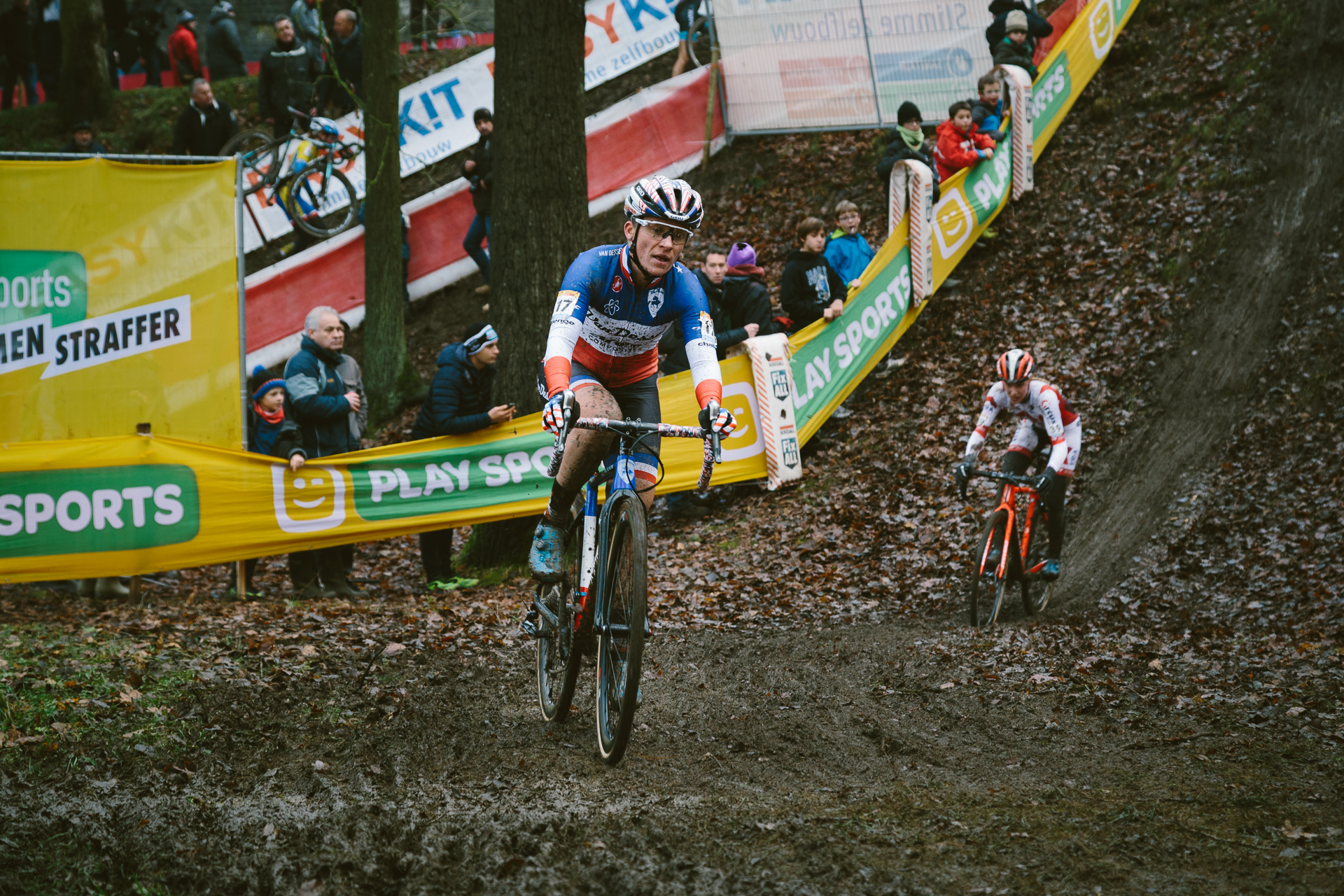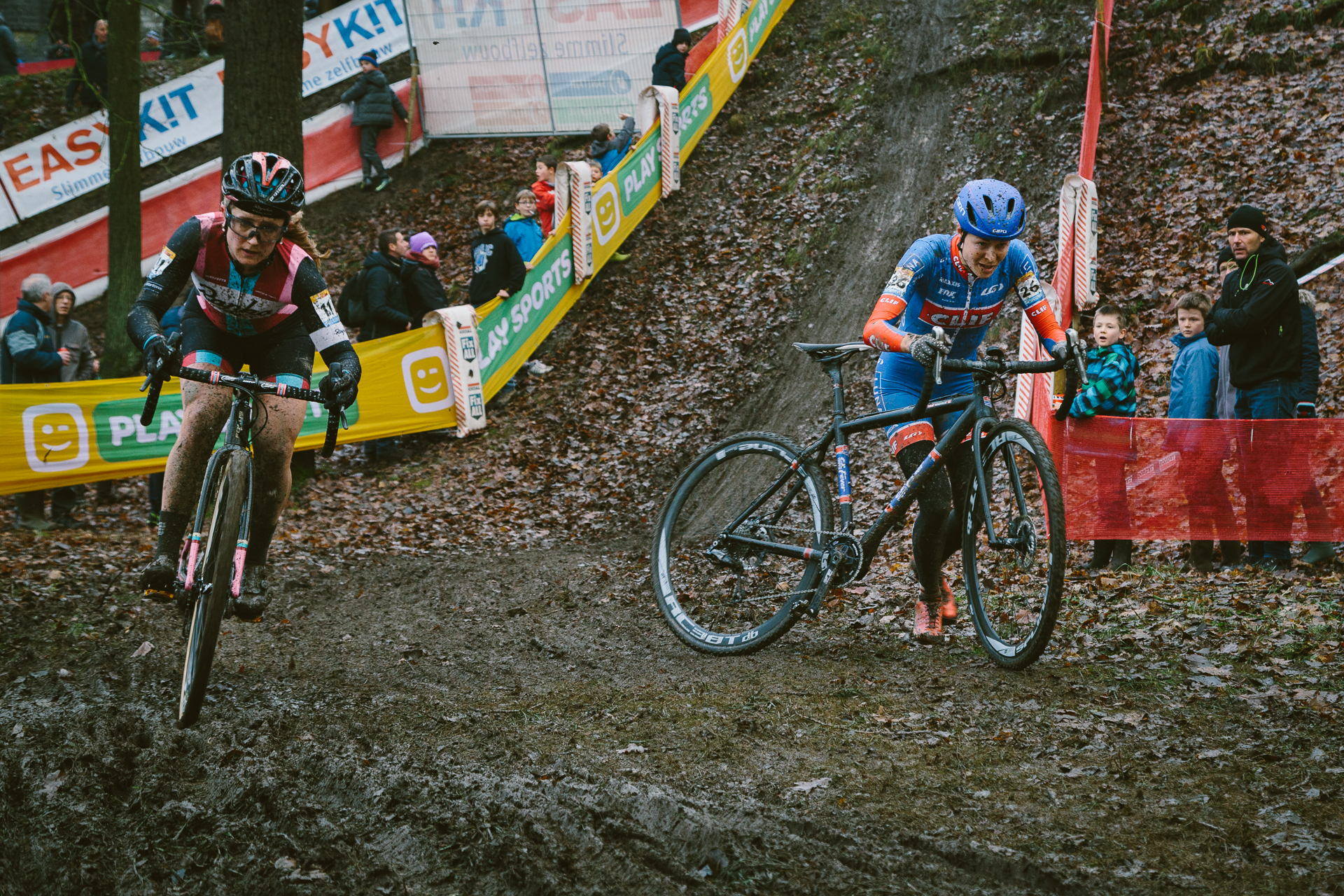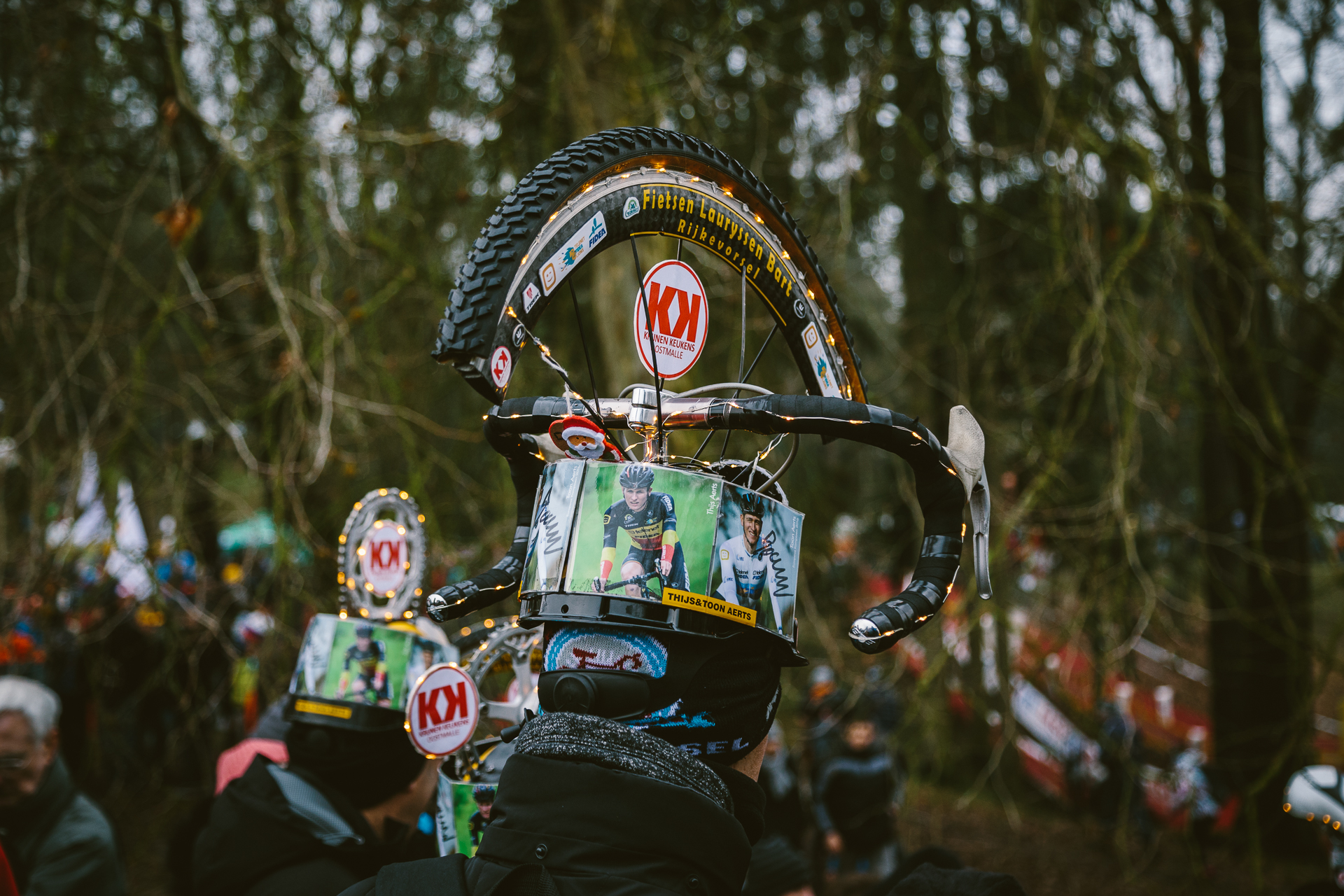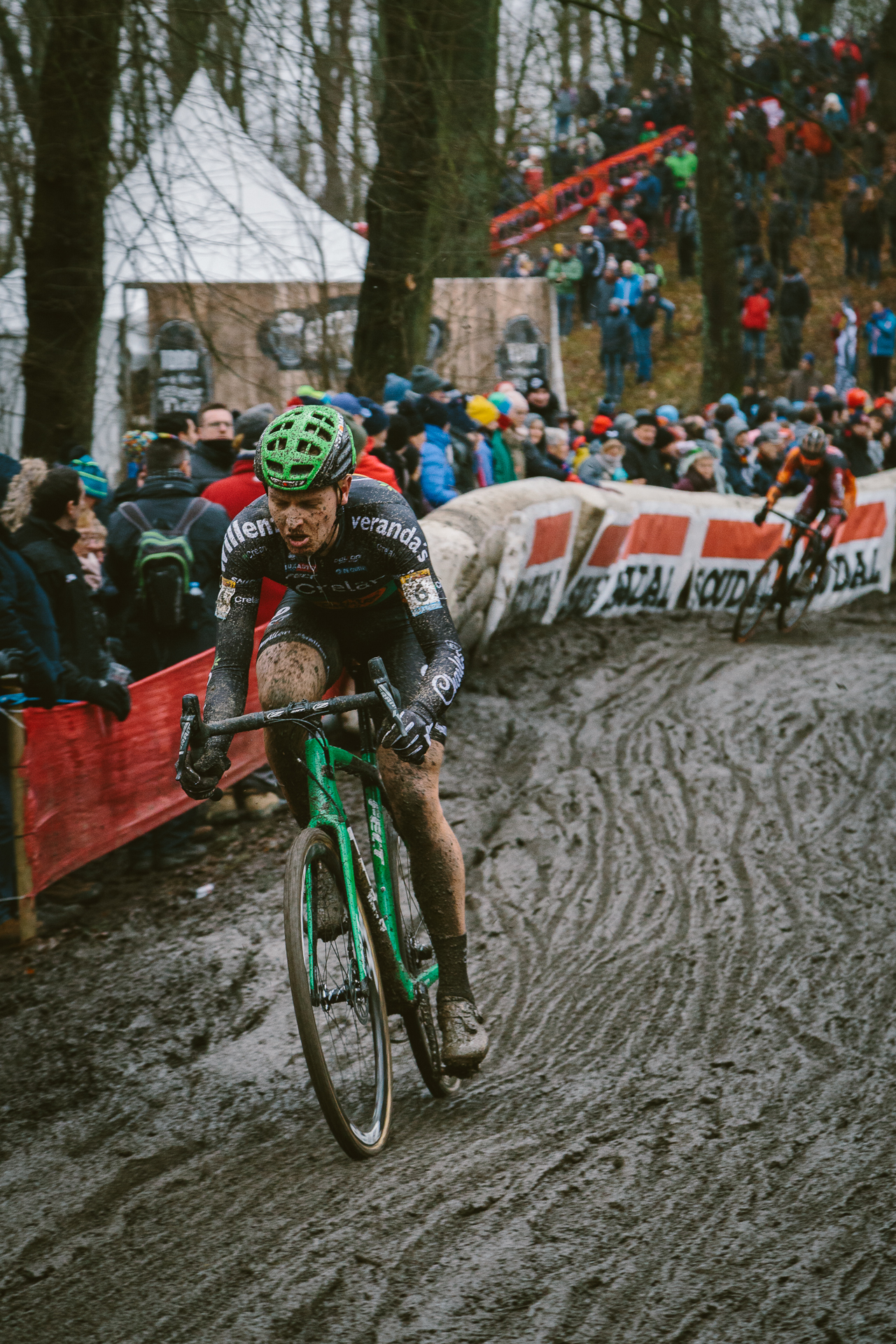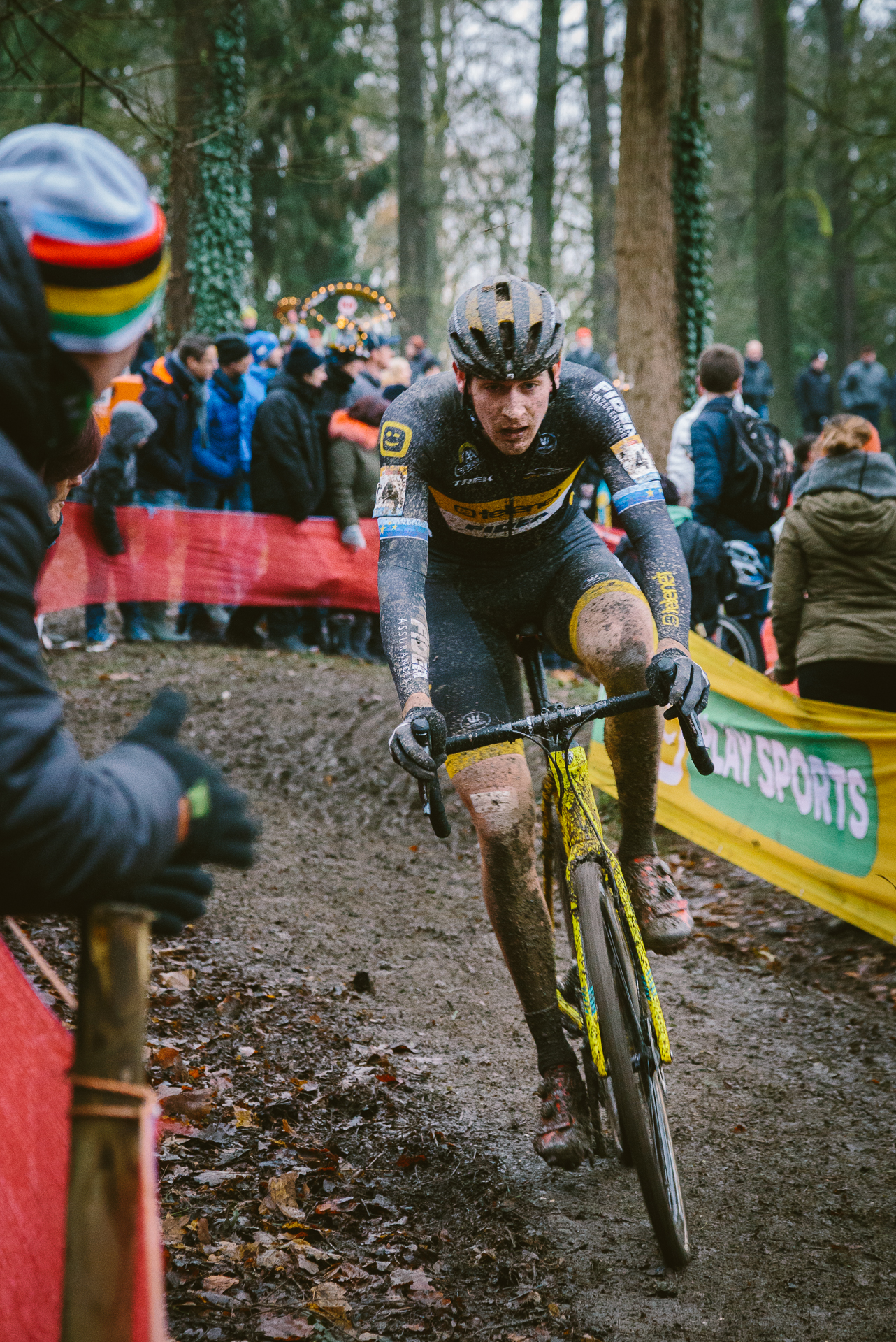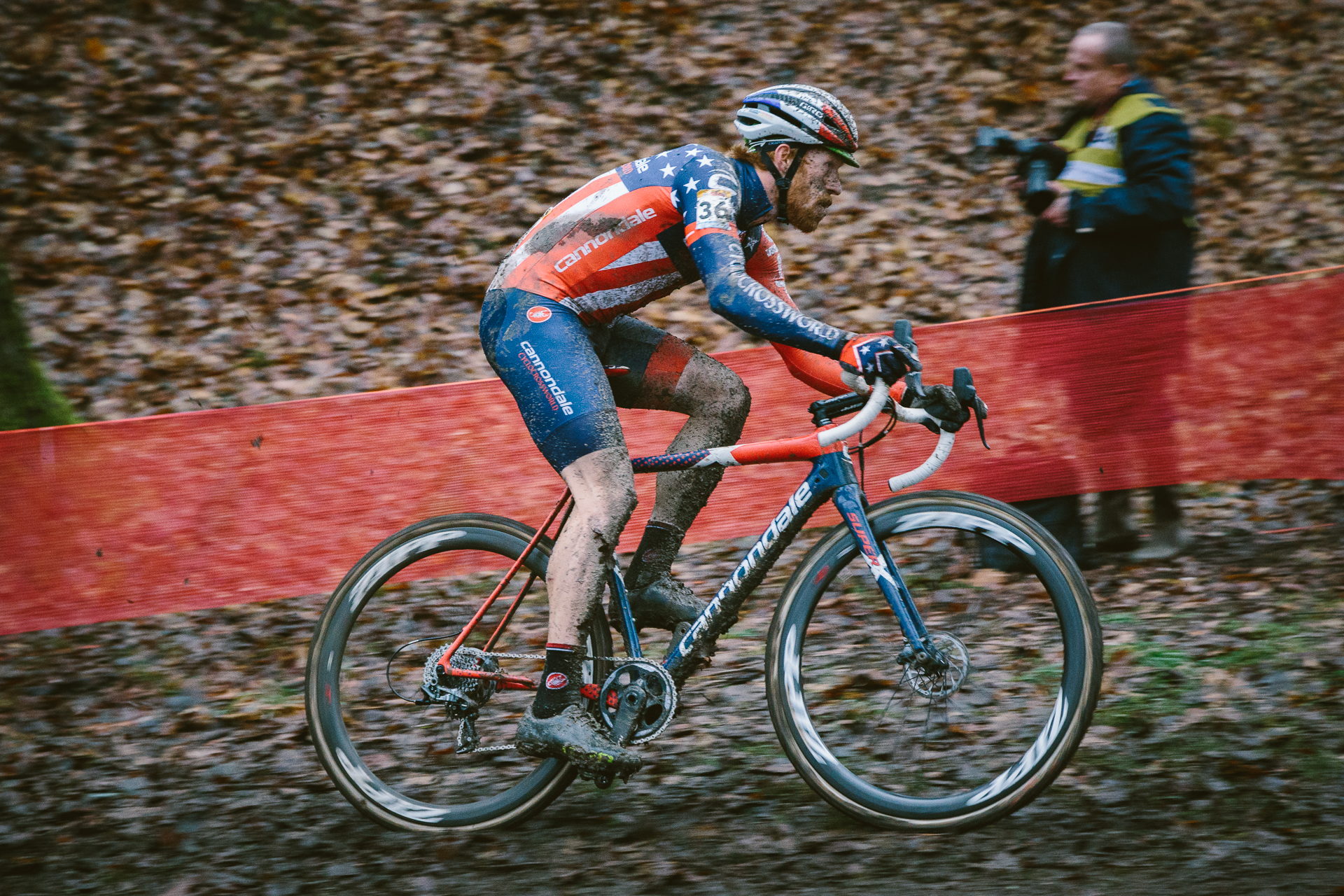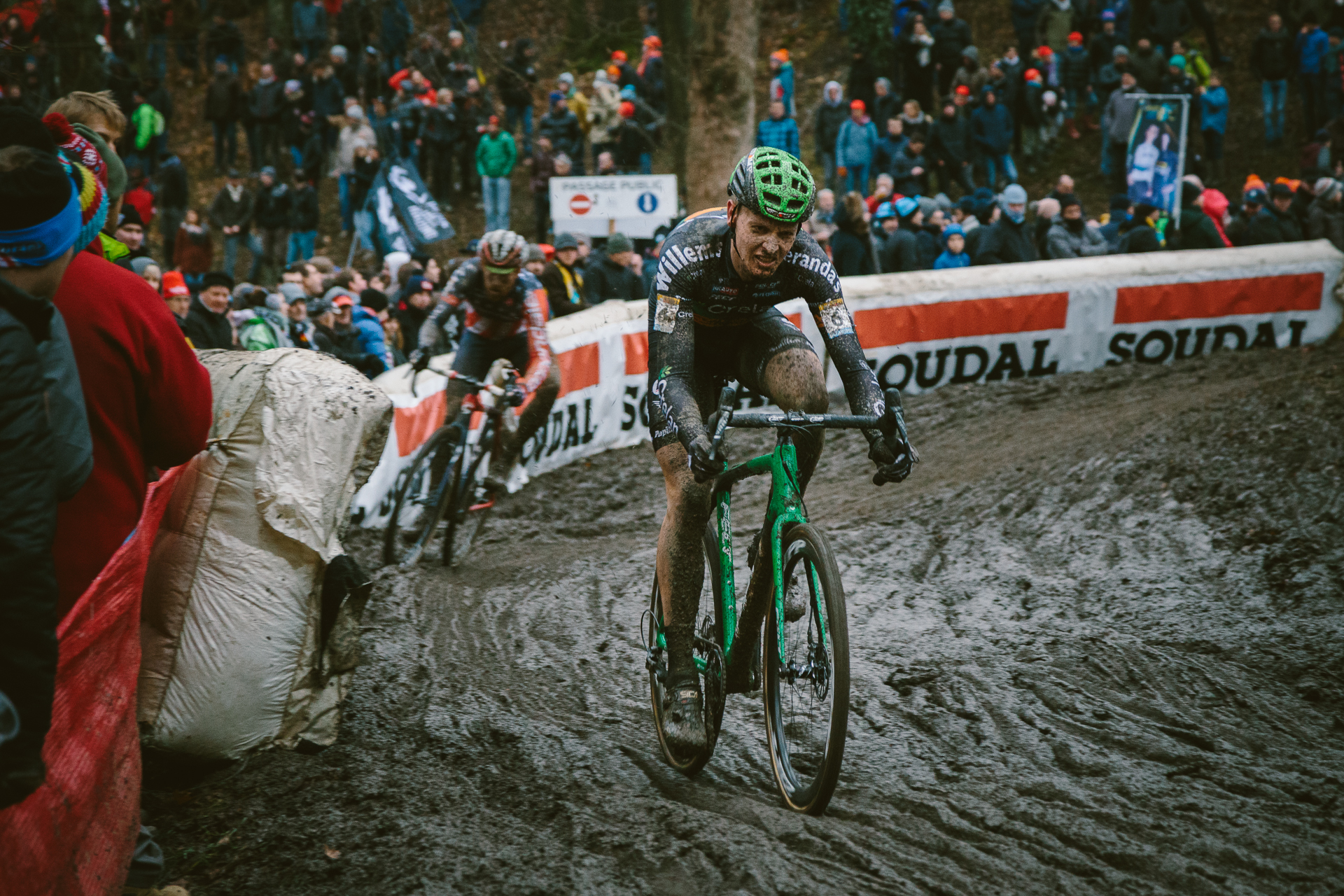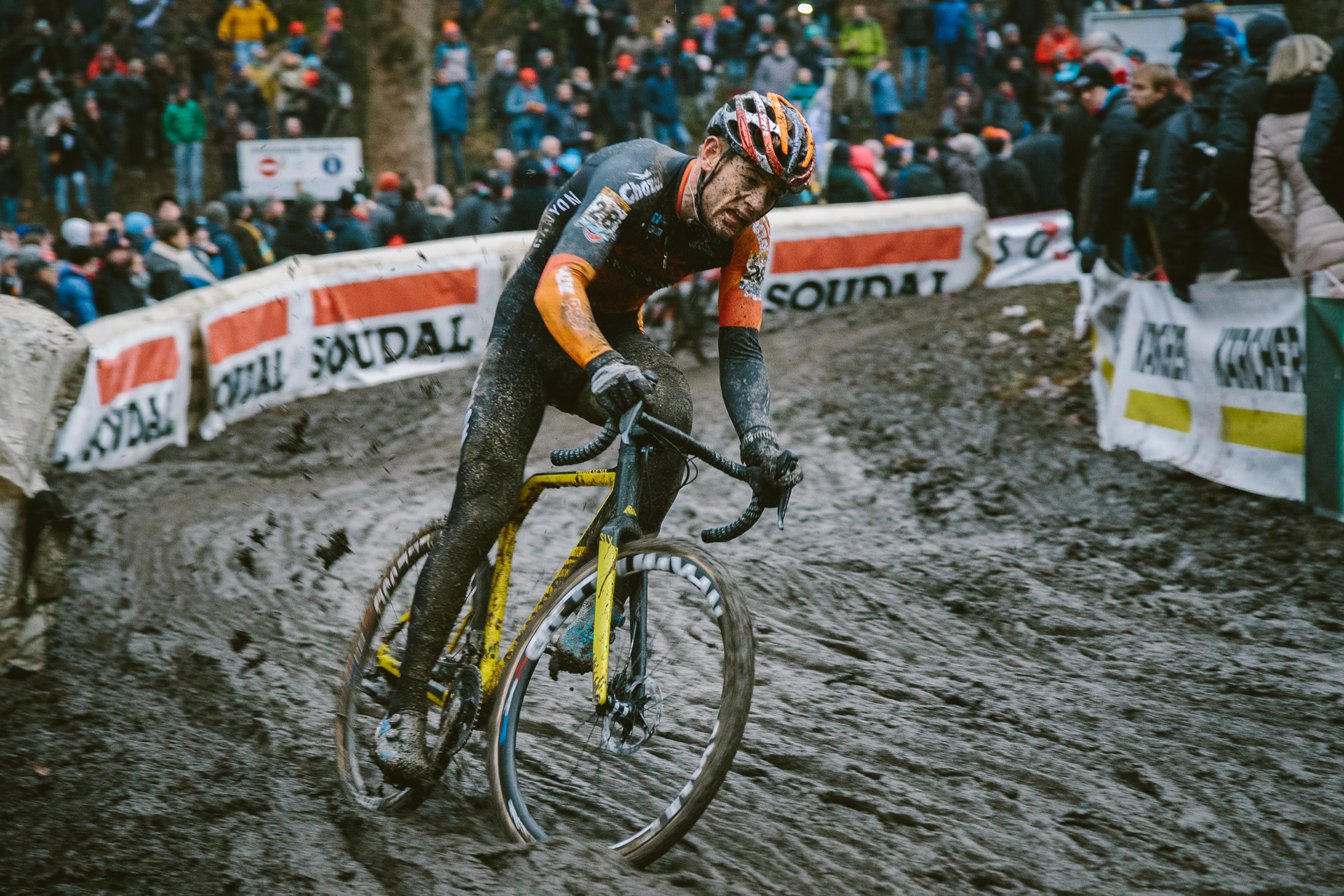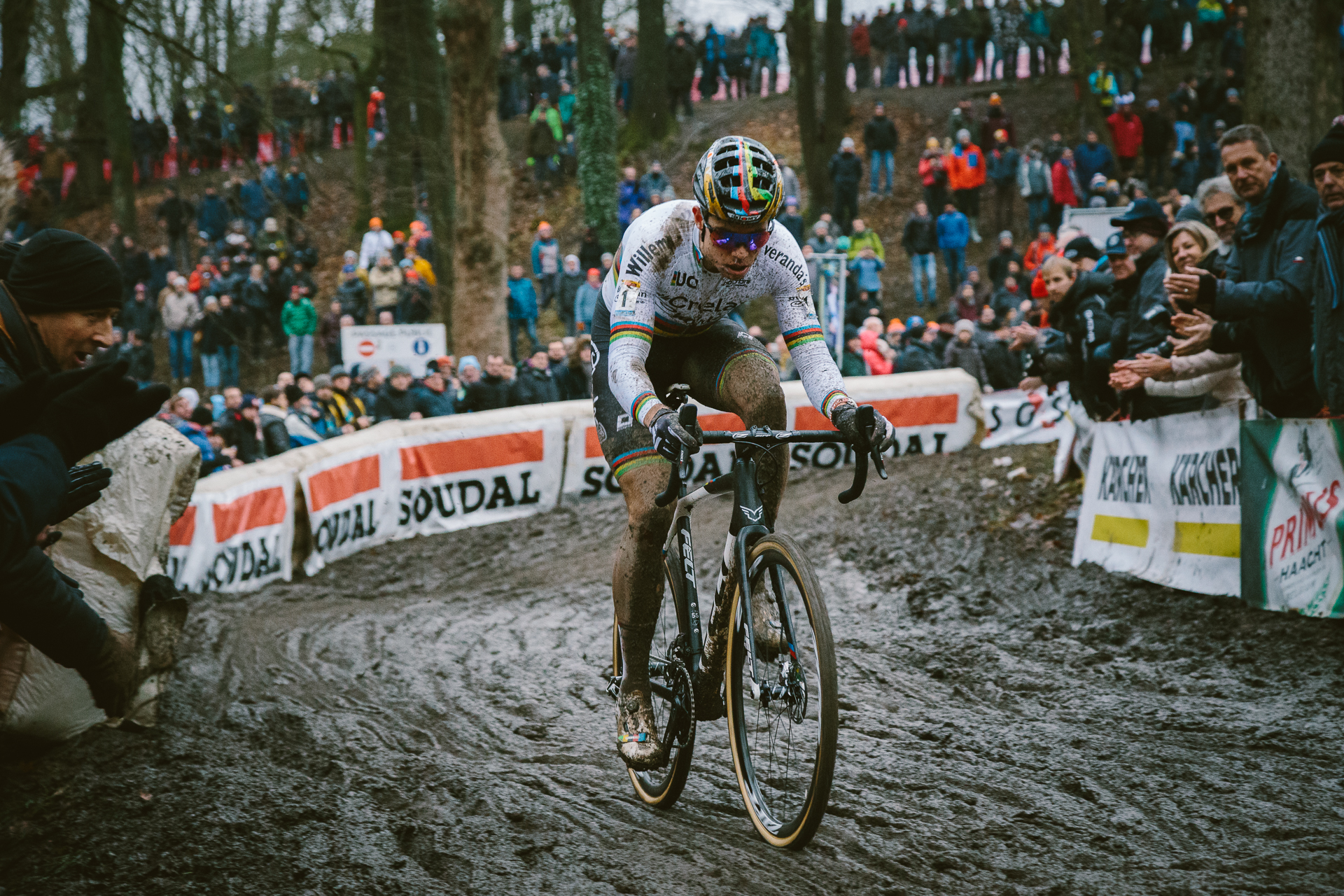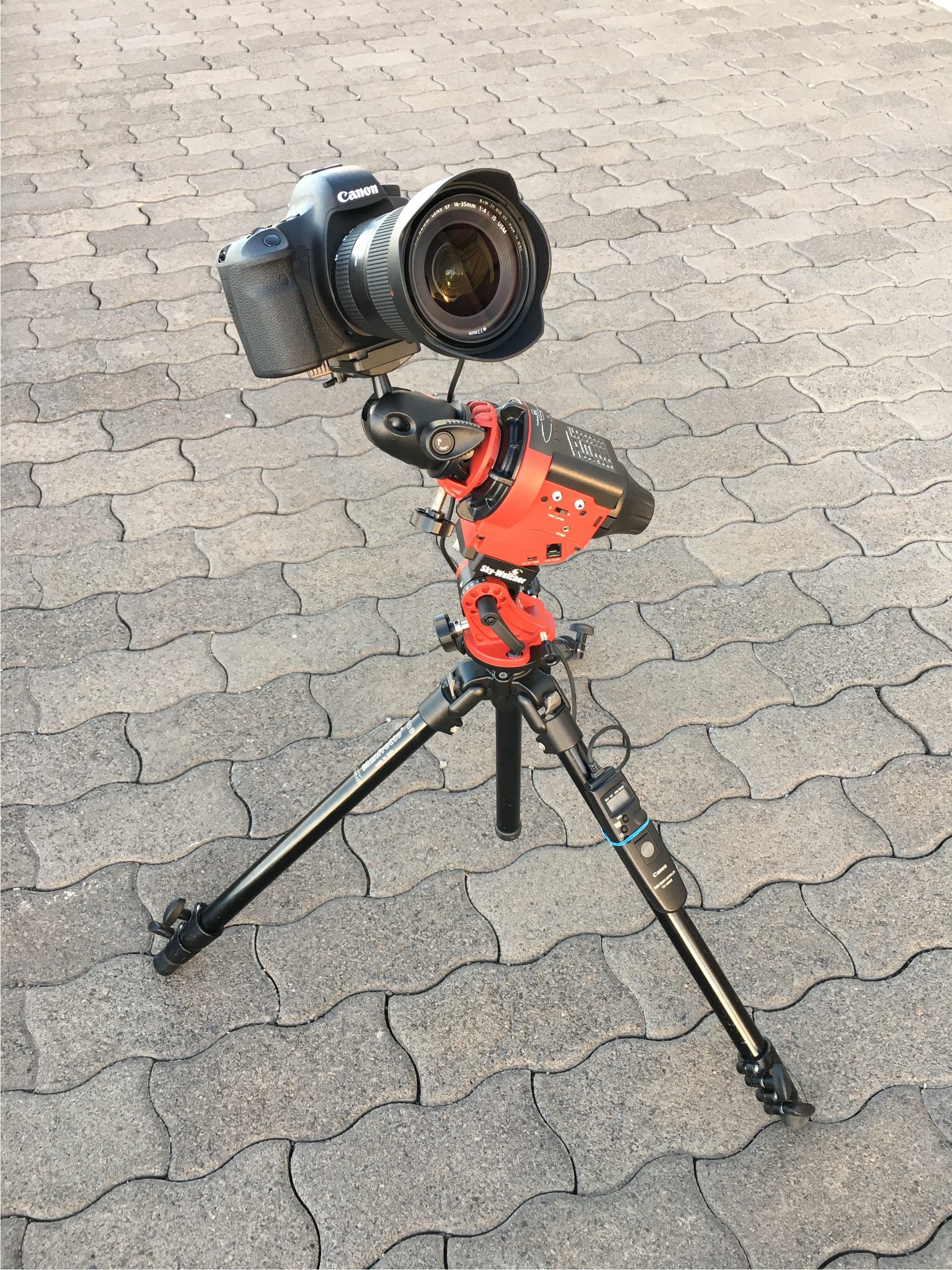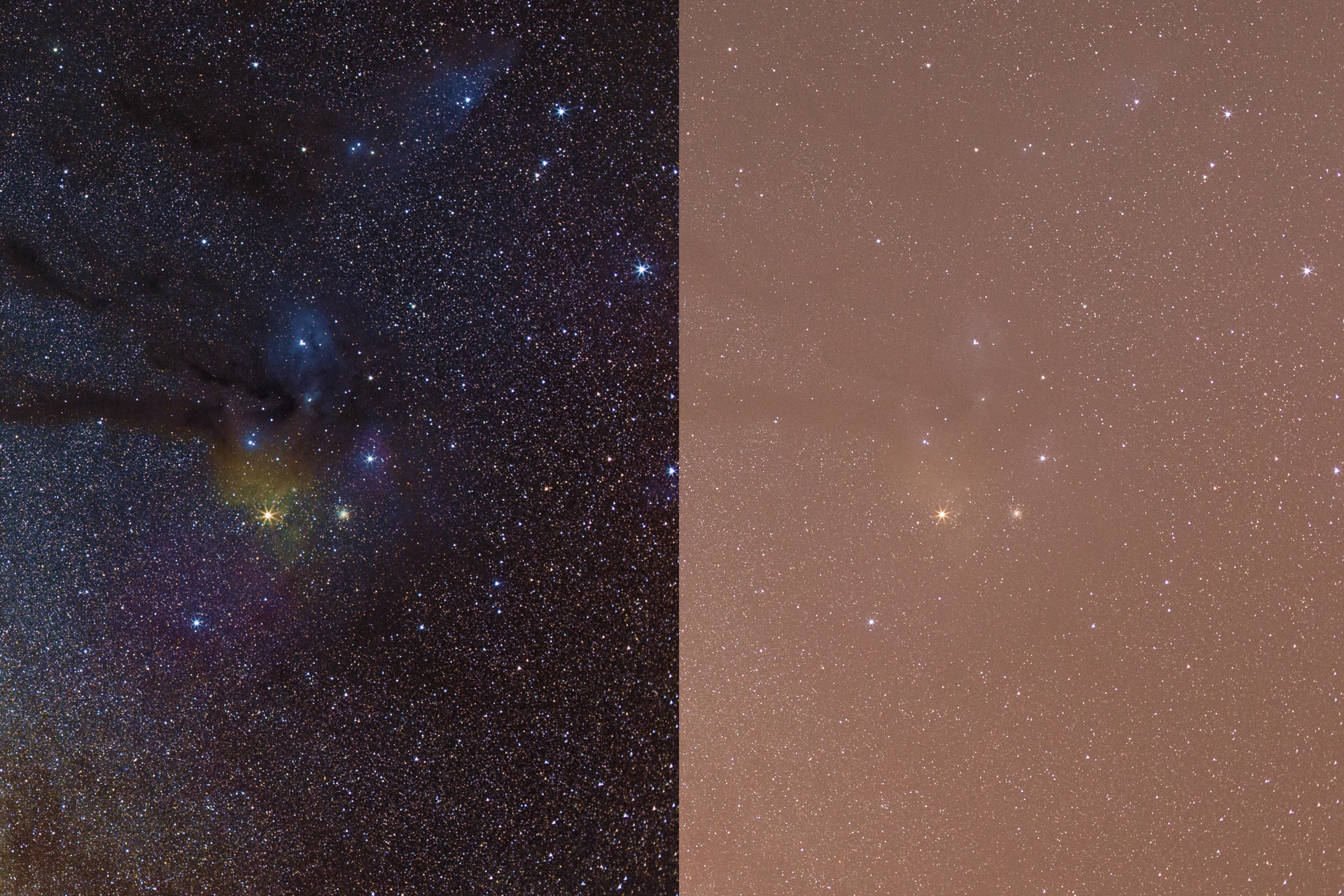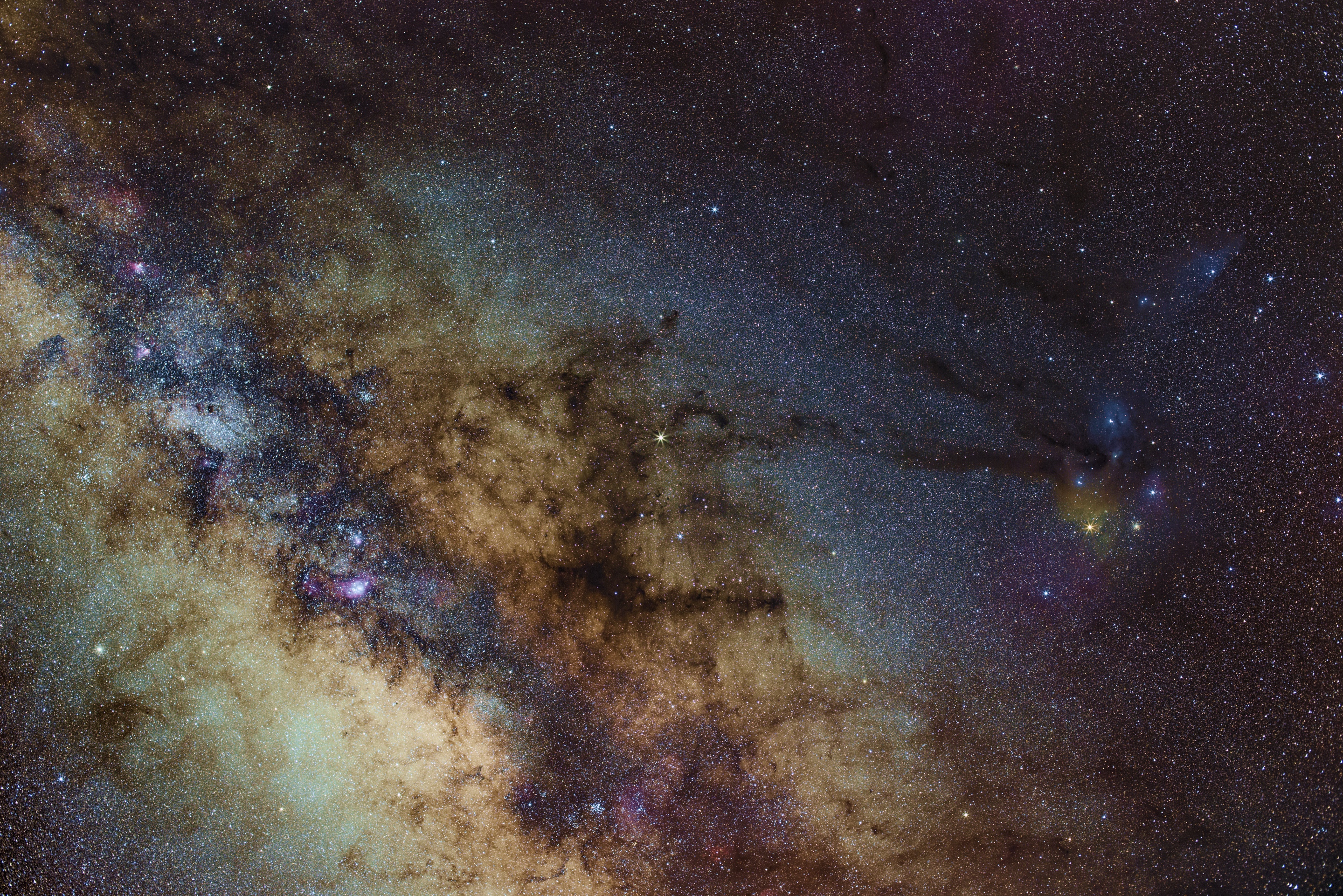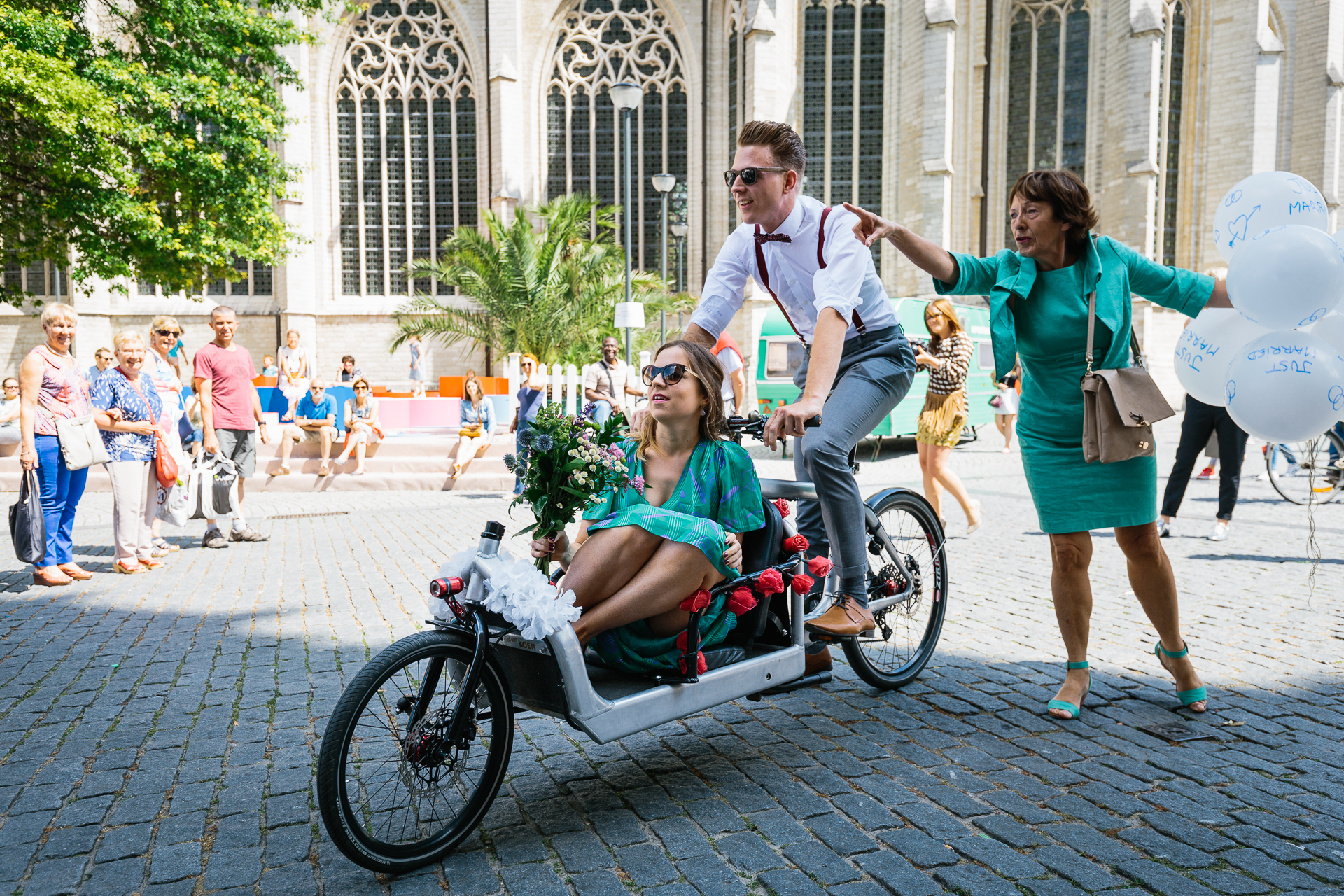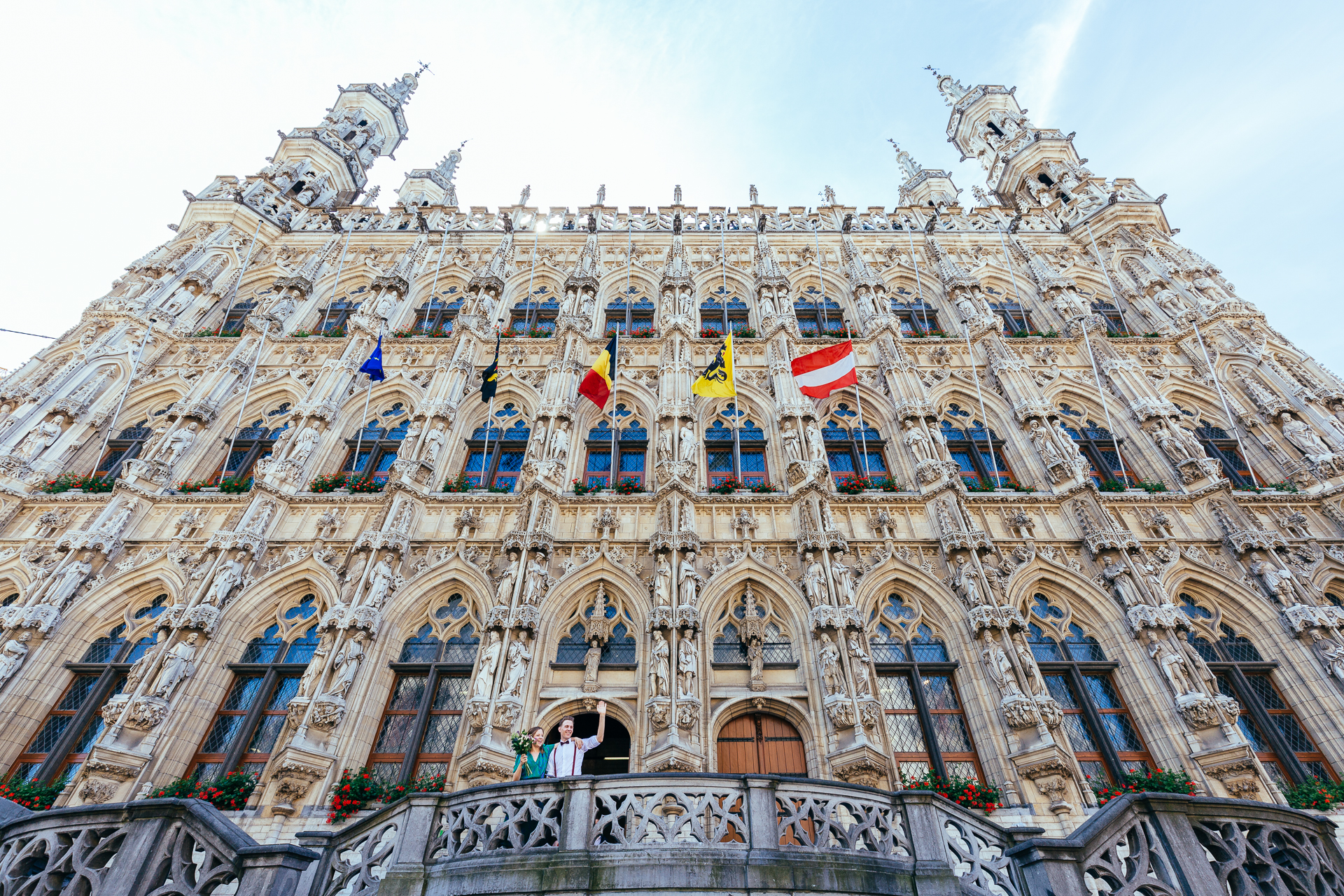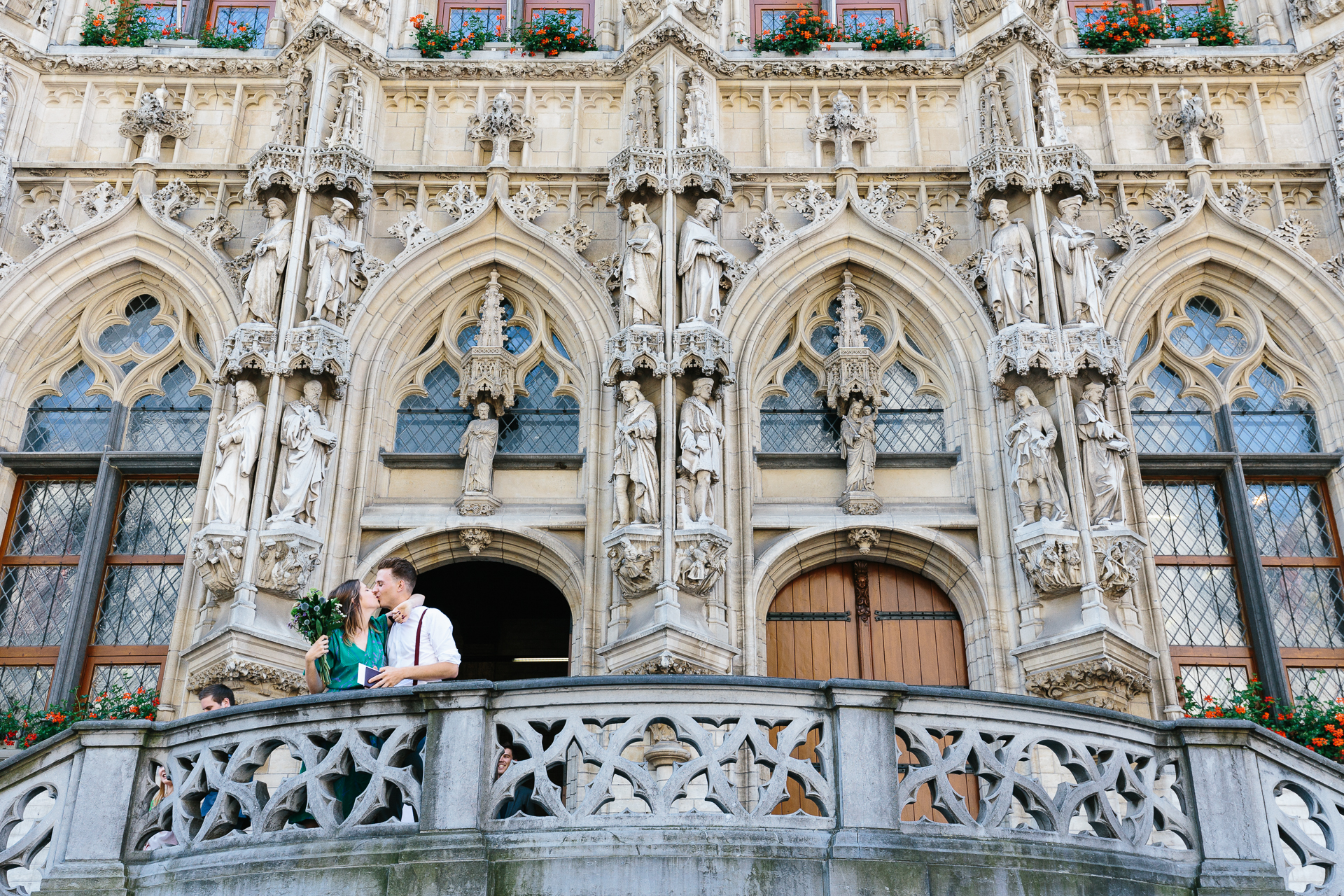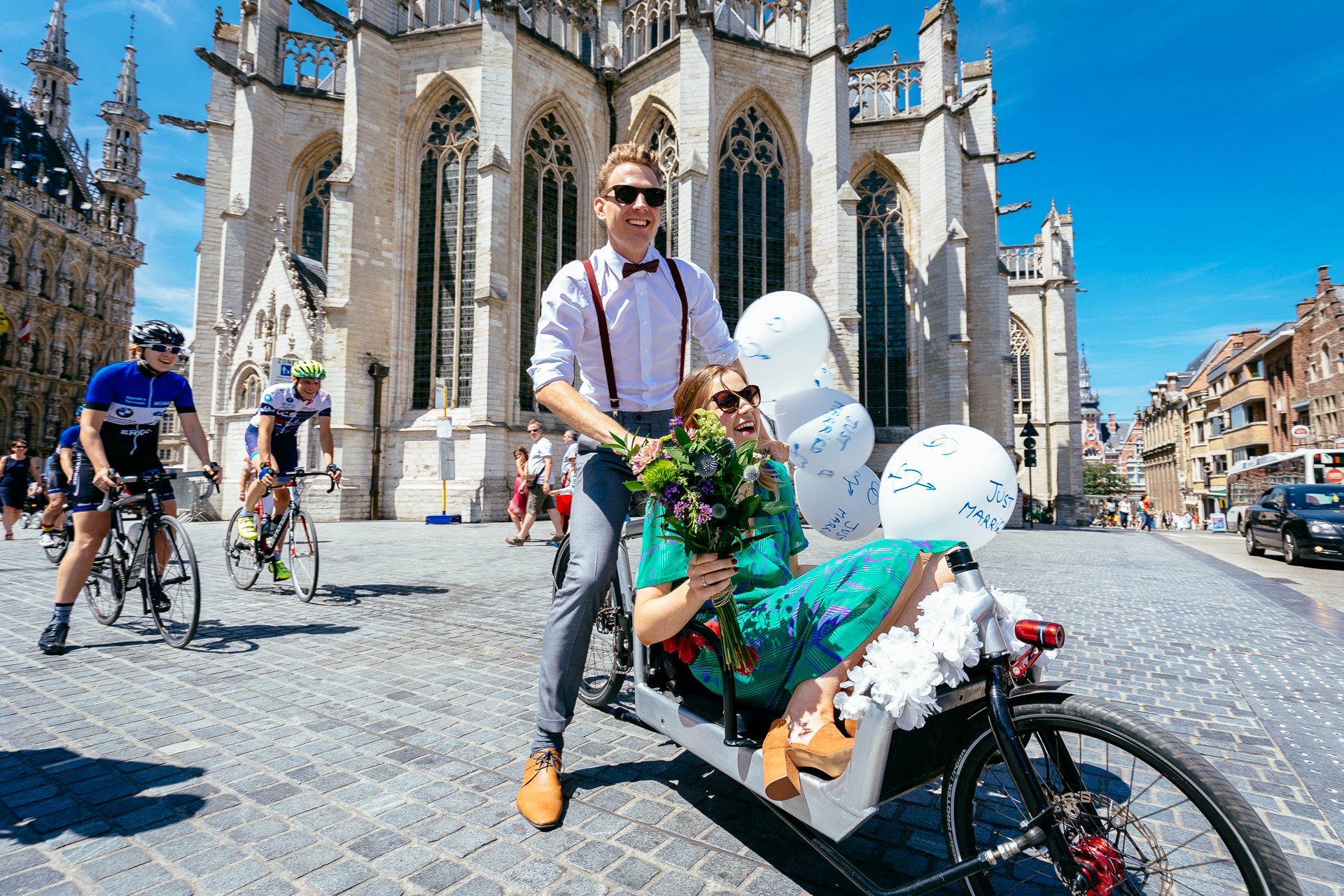I was not yet that much into astronomy when Comet Hale-Bopp passed by in 1997, so I have never seen a bright naked-eye comet until recently. There were a few smaller comets in the past decade(s) which became borderline visible, e.g., Pan-STARRS (C/2011 L4) in 2011, or comets that were big and bright but only observable from the Southern hemisphere, such as C/2006 P1 (McNaught). This finally changed with the arrival of C/2020 F3 (NEOWISE) this month.
In the first days it was only visible before sunrise, so I had to get outside very early to catch it in the twilight, thus it made more sense (to me) to simply stay up all night and go to the nearby abbey to take pictures at half past three… I took the first picture on the 11th of July at 03:53 local time (5 sec, ISO 400, Fujilim X-T3 + Fujilim XF 50mm f/2 @ f2.8). The comet was extremely bright, when I arrived to the shore of the lakes next to the abbey it was unmistakeable, even though the sky was already getting brighter.
On the 12th I got up early again (or more precisely: stayed up late again…) to drive to a nearby village hoping to take some pictures under less light polluted skies, but by the time I arrived clouds rolled in and I only got a few pictures that showed at least part of the comet through gaps in the cloud layer – none of which is worthy enough to be shown here.
On the 13th the visibility on the evening sky finally became better than on the morning sky (as the comet travelled further Northwest), but given there were some high clouds, I choose to stay in Leuven, and we simply walked to the Arenberg castle with Clio to have a look from there. While visually the comet was a nice sight hanging over the castle, the photos turned out to be not so special (mostly because of the dull, grey sky). Still, it was pretty amazing that from a quite bright spot inside the city we could see multiple degrees of the comet’s tail with our naked eyes.
After a few cloudy days, the 17th finally brought some clear skies again, so I drove 15 km to the South (parked along a dirt road just SW of the military airport of Beauvechain) to take a series of pictures. There were still some clouds near the horizon, but the view was definitely much better than from Leuven. I could even see the Milky Way above me! I processed the pictures with Astro Pixel Processor (APP). The image below is a result of processing 55 images (taken around local midnight) of the comet (30 sec, ISO 800, Fujilim X-T3 + Fujilim XF 50mm f/2 @ f2.8), and a set of calibration images (20 dark, 10 flat, and 10 darkflat). The (thin blue) ion tail is visible for over 17 degrees (34 times the apparent size of the full Moon)! This image has the same field of view as the first picture with the abbey tower above. With the naked eye, the tails were visible for around 5 degrees from the coma (the head of the comet).
Finally, when I thought I had enough of the comet, I made a last minute decision on the 21st and drove almost one and a half hour to the highest point of Belgium, and set up my camera there for another set of pictures. The sky was as good as it gets from Belgium, so even though the comet had noticeably lost from its brightness during the previous few days, it still looked very nice even with the unaided eye (sowing at least 5 degrees of tail easily). Unlike on the 17th in Beauvechain, this time there were no clouds near the horizon, only a bot of light pollution from the cities further away. I took multiple sets of images, the one below is created from processing 80 exposures (15 sec, ISO 1600, Fujilim X-T3 + Fujilim XF 50mm f/2 @ f2.8) taken around midnight local time (and also using 20 dark, 20 flat, and 20 darkflat calibration frames). The three bright stars in the top third of the image are the rightmost stars of the Big Dipper, and the ion tail on the image is more than 20 degrees long (at least, as it ends outside of the frame).
It took me hours (or rather days) to process these images to get the most detail out of them without blowing up the noise, but I am more or less happy with the end result now. (In the last picture even the bands of airglow are visible – if you know what to look for – parallel with the horizon, slightly tilted across the image.)
